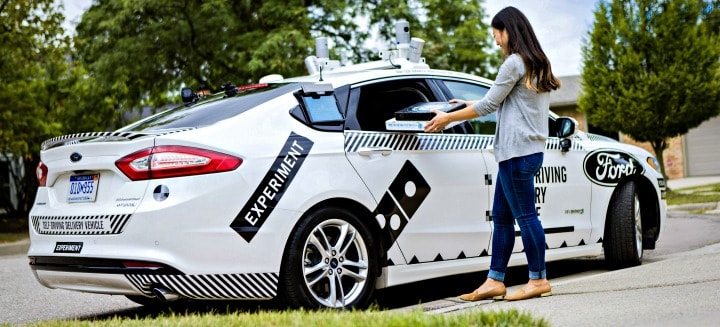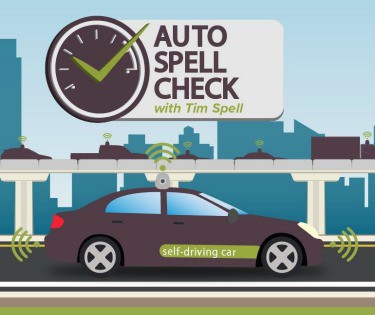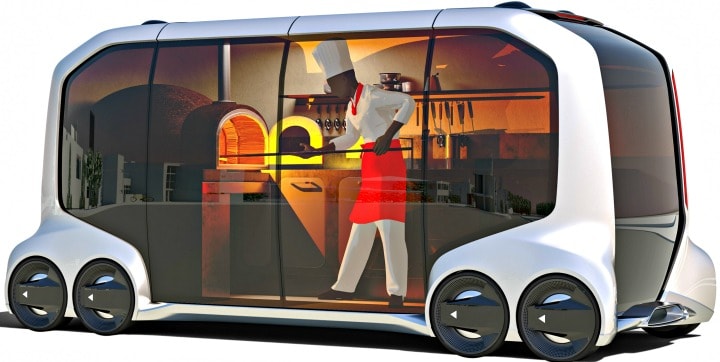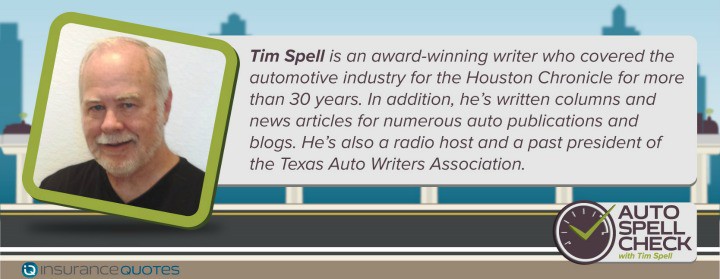Customized Vehicles to Take the Driver Out of Pizza Delivery

Commercial vehicles are among the first driverless cars to undergo real-world testing, with a variety of food-delivery services at the forefront of this research. Ripe for such testing is pizza delivery — one of the world’s most in-demand services.
Automakers have teamed with prominent pizza restaurant chains to explore the future of driverless food delivery. Ford has partnered with Domino’s Pizza Inc. and Toyota has joined with Pizza Hut. Each are taking significantly different approaches to pizza delivery. Toyota’s venture centers around a concept vehicle and is expected to start international testing in 2020. Ford’s delivery research began in summer 2017, utilizing existing technologies and vehicles.

Using modified Ford Fusion Hybrid production sedans, the automaker and world’s-largest pizza chain have been able to implement many hours of testing. Selected Domino’s customers in the Ann Arbor, Michigan area have participated in the research.
“All of our testing research is focused on our goal to someday make deliveries with self-driving vehicles as seamless and customer-friendly as possible,” says Russell Weiner, president of Domino’s USA.
How does driverless delivery work?
The delivery test starts with the Fusion Hybrid’s rear window lowering and a Domino’s employ sliding the order into the Domino’s Heatwave Compartment. Pizza boxes sit on a woven mat atop an elevated platform, flush with the window bottom. The window closes and car begins its delivery route with a Ford safety engineer in the driver seat and researcher passengers.
The customer receives a text message that the delivery is in progress, along with instructions on how to retrieve the order using a personal code. The customer can track the delivery on a cell phone via GPS and an upgraded version of the Domino’s Tracker. The customer sees a map of the route and a car icon showing the vehicle’s position. Near the icon is an “ANY MINUTE NOW!” message.
When the vehicle arrives at its destination, the customer approaches the car’s window. It’s adorned with diagonal black and white stripes, and a large red “START HERE” banner with arrows pointing to a rear-pillar-mounted keypad. The customer enters the code and gets a visual and voice “YOU GOT IT” affirmation, accompanied by a musical jingle. The window lowers and the customer slides the food from the compartment. The window closes and the delivery car resumes its route.
The research seeks to determine how the customer feels about the delivery experience. They get customer reactions to coming outside to get the order, the clarity of the interface and their preference where the car should park — in the driveway or next to the curb.
The Fusion Hybrid is equipped with sophisticated technologies that permit self-driving. It uses GPS coupled with four LiDAR sensors to maintain a clear handle on its surroundings. LiDAR, an acronym for light, detection and ranging, comes in the form of small cylinders that spin atop the vehicle’s roof. They emit pulsed laser beams that bounce off objects and return.
“What’s different about this car is that it can see what’s around it 360 degrees, all the time, out to a football field in length,” says Randy Visintainer, Ford research and innovation director.
“This system can look all around the vehicle, have complete situational awareness, understand what’s happening and be able to react to what’s happening around it or inform the driver so that the driver can react.”
LiDAR technology provides HD-type-quality imagery, says Visintainer. “With that we can make 3D images for a very detailed and accurate map that looks like what you can see in a high-end video game.”

Is it a toaster or a car?
Toyota’s delivery vehicle, the e-Palette Concept, also is fully automated and offers flexibility for Pizza Hut to tailor delivery to suit varying needs.
It’s a battery electric vehicle, shaped more like a giant toaster than a car.
Toyota plans to build three different sizes with smaller ones rolling on four wheels and the larger ones on eight. Lengths vary from 13 to 22 feet. The model unveiled at the 2018 Consumer Electronics Show spans 15 feet, 8 inches — about a foot shorter than Toyota’s Sienna minivan.
While Pizza Hut’s vision for the e-Palette Concept includes pizza delivery, it goes beyond that to outfit some models as mobile kitchens. These would benefit customers in certain areas of the world, especially in remote locations. Enabling the e-Palette Concept to accommodate a kitchen is its open cube-shaped interior design with generous space and a low floor.
Like the interior, the e-Palette Concept’s autonomous driving technology is customizable. Its open vehicle control interface and software tools allow for installation of an automated driving system and vehicle management technology of a partner company’s choosing. Toyota’s Guardian technology acts as a safeguard that installed technology functions properly and safely.
Pizza Hut is among several founding partners that form the e-Palette Alliance. This mobility service business alliance leverages the power of Toyota’s Mobility Services Platform to develop connected mobility solutions, which includes custom outfitting the e-Palette Concept, to better serve customers.
“The automobile industry is clearly amidst its most dramatic period of change as technologies like electrification, connected and automated driving are making significant progress,” says Toyota Motor Corp. President Akio Toyoda after announcing the alliance and e-Palette Concept. “This announcement marks a major step forward in our evolution toward sustainable mobility, demonstrating our continued expansion beyond traditional cars and trucks to the creation of new values including services for customers.”
Editor’s note: Top photo courtesy of Ford. Middle photo courtesy of Toyota.

